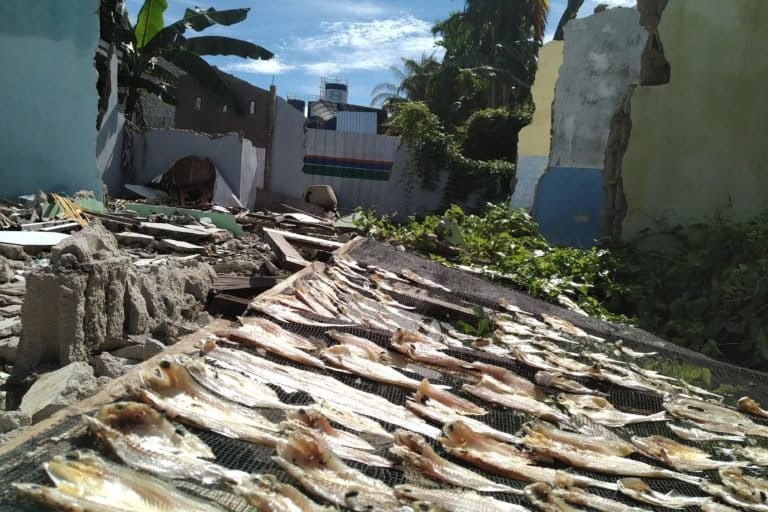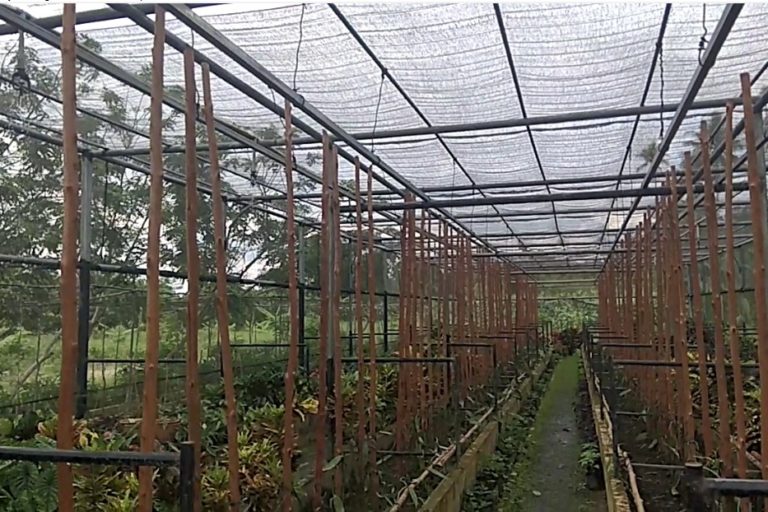- Suma Ruslian is one of many Indonesian farmers in western Borneo bracing for a major impact to his livelihood from a port project and special economic zone slated to open later this year.
- The port of Kijing is being touted by the government as the biggest in West Kalimantan province, with a strategic location between the Strait of Malacca and the South China Sea, two of the world’s busiest waterways.
- Locals in the area who depend on farming and fishing say they worry about the impacts from increasing ship traffic and land-use change for industry.
- Suma and experts are calling on the government to provide long-term support for the farmers and fishermen in adapting to the changes.
MEMPAWAH, Indonesia — In a village in western Borneo, Suma Ruslian runs a community center that helps fellow agriculture and aquaculture farmers prepare for the impact of a massive infrastructure project in their midst.
Like many small farmers in Sungai Kunyit village, in the Indonesian province of West Kalimantan, Suma says he’s worried that when the Kijing port opens later this year, it will impact his livelihood.
The 14 trillion rupiah ($968 million) port is scheduled for a soft opening this July, part of a special economic zone spanning 5,000 hectares (12,400 acres). Once one of Indonesia’s most heavily forested provinces, West Kalimantan is fast losing its forest cover to mines, oil palm and rubber plantations, logging, and industrial aquaculture.


Many farmers have had to give up their land for the port after a long dispute that was settled in court. Some of them now work at Suma’s community center. Suma says he hopes the port, once it starts operating, won’t further sideline farmers and force them to abandon their livelihood. His own situation is more unusual: he used to work at a bank, before giving it up to start farming.
But he didn’t dive into it “carelessly,” he says. He studied what he felt were the best practices in agriculture, and today shares with the farmers his understanding of what he calls “the agrotechnology method.”
Suma says the center’s aim is to help farmers improve their skills through education and the application of technology to produce good-quality harvests. There’s a hope, he says, that these teachings will be passed on down to the future generation of farmers to incorporate into their own farming methods.
Most small farmers in Sungai Kunyit plant fruits, including coconuts, bananas and mangos; locals living closer to the coast work as fishermen.
“Agrotechnology is an answer toward a more advanced agriculture,” Suma says, adding he also promotes organic farming at the center so that local farms can be more sustainable.


Sungai Kunyit’s farmers have reason to be concerned about the Kijing port development, says Erni Panca Kurniasih, a lecturer in regional development economics at Tanjungpura University in Pontianak, the West Kalimantan capital.
The special economic zone that it’s part of is designed to attract various industries to the area, which would impact land use there, potentially pushing farmers off their land. The government has touted Kijing as a key infrastructure project. Once completed, it will be the biggest port in West Kalimantan, with the capacity to handle 1.95 million TEU (twenty-foot equivalent) of container traffic.
That’s only a fraction of the nearly 8 million TEU handled by the port of Tanjung Priok in Jakarta, Indonesia’s biggest, but Kijing sits in a strategic location. It lies midway between Tanjung Priok and the port of Singapore, the world’s second-biggest, and at the meeting point of two of the world’s busiest and most strategically important waterways: the Strait of Malacca and the South China Sea.
The anticipated increase in shipping traffic in the region as a result of the new port threatens to disrupt fishing activity, Erni says. There’s also the potential for sweeping land-use changes in areas around the port as industries are drawn to the site for better access to international trade routes. “Certainly, this becomes a serious problem that the government must deal with,” Erni says.
She adds the government must develop a long-term solution for locals to help them adapt to the impacts of the port, including the need to find new sources of livelihood.
“The government’s role is very much needed to help the people bearing the brunt of the development of the port get full justice,” she says. “Don’t sacrifice one side for the sake of regional advancement.”


This story was first reported by Mongabay’s Indonesia team and published here on our Indonesian site on May 19, 2020.
FEEDBACK: Use this form to send a message to the author of this post. If you want to post a public comment, you can do that at the bottom of the page.